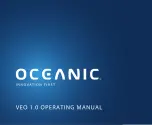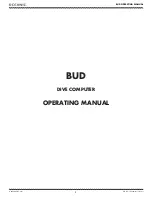
8
®
It is calculated based on the amount of nitrogen absorbed by twelve hypotheti-
cal tissue compartments. The rates each of these compartments absorb and
release nitrogen is mathematically modeled and compared against a maximum
allowable nitrogen level. Whichever one of the twelve is closest to this maxi-
mum level is the controlling compartment for that depth. Its resulting value
will be displayed numerically (Fig. 8a) along with the No Decompression Dive
icon and graphically as the Tissue Loading Bar Graph.
As you ascend from depth following a dive that has approached the no decom-
pression limit, the Tissue Loading Bar Graph will recede as control shifts to
slower compartments. This is a feature of the decompression model that is the
basis for multilevel diving, one of the most important advantages the Pro Plus
offers.
The no decompression algorithm is based upon Haldane’s theory using maxi-
mum allowable nitrogen levels developed by Merrill Spencer. Repetitive diving
control is based upon experiments designed and conducted by Dr. Ray Rogers
and Dr. Michael Powell in 1987. Diving Science and Technology
®
(DSAT), a
corporate affiliate of PADI
®
, commissioned these experiments.
Oxygen Accumulation Time Remaining
Oxygen accumulation (exposure) during a dive, or 24 hour period, appears
graphically as the Oxygen Accumulation (O2) Bar Graph. As time remaining
Fig. 8 - No Decompression
Dive Time Remaining
NO DECO
C Z
DECO
C Z
O
2
FT
FT
MAX
a
















































